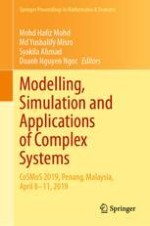2021 | OriginalPaper | Chapter
Cytotoxic Activity of Raphanus sativus Linn. on Selected Cancer Cell Lines and Mechanistic Pathways Predicted Through Mathematical Modeling
Authors : Angelyn Lao, Jan Marie Claire Edra, Kathleen Dane Talag, Daisylyn Senna Tan, Glenn Oyong, Marissa Noel, Ma. Luisa Enriquez, Maria Carmen Tan
Published in: Modelling, Simulation and Applications of Complex Systems
Publisher: Springer Singapore
Activate our intelligent search to find suitable subject content or patents.
Select sections of text to find matching patents with Artificial Intelligence. powered by
Select sections of text to find additional relevant content using AI-assisted search. powered by
